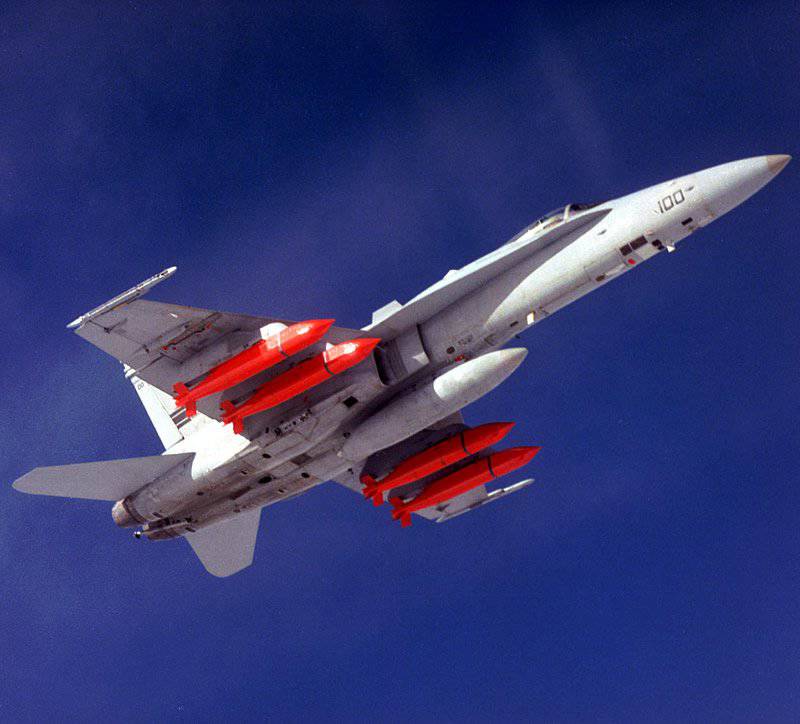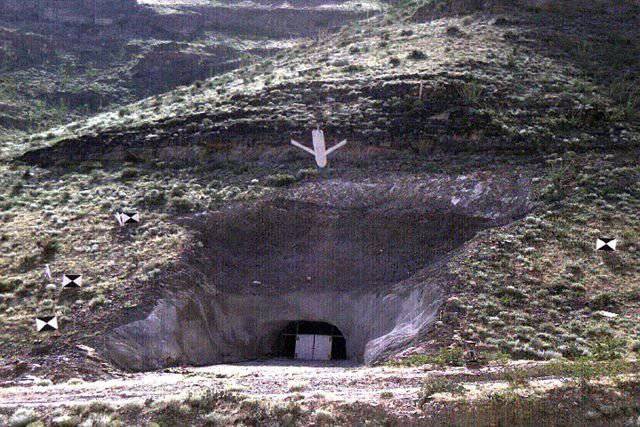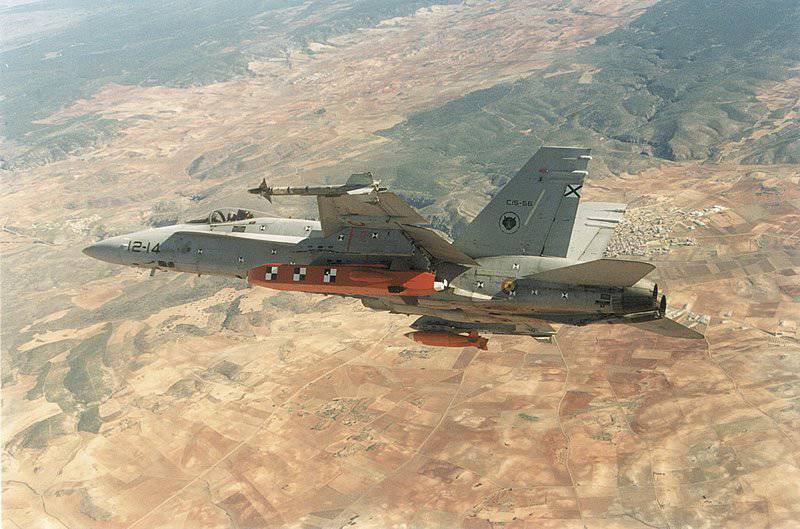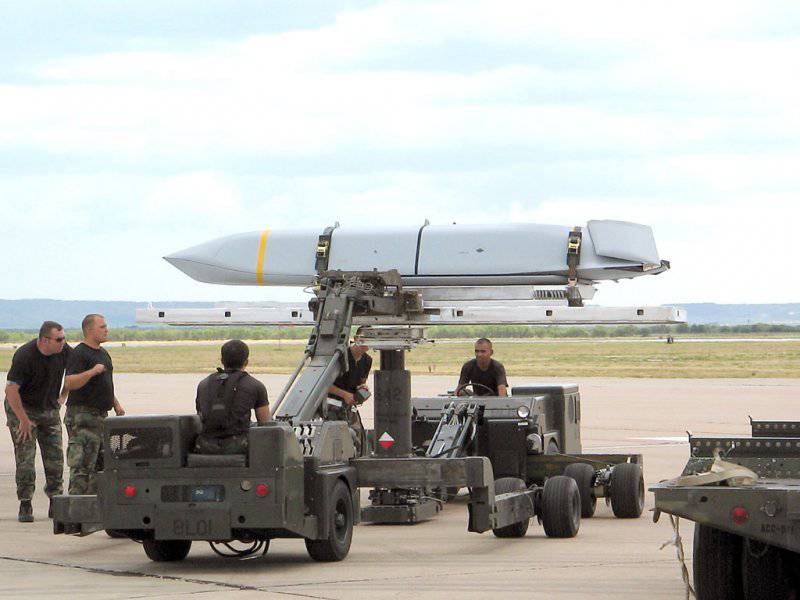Finland arms its Hornets with cruise missiles

In 2007, Finland wanted to secretly buy low-profile AGM-158 JASSM cruise missiles from Lockheed Martin to arm its Hornet F / A-18C / D fighters. Despite history good relationship, the US Department of State in 2007 refused.
Fast forward to 2008 year. Russia's invasion of Georgia and the reaction of Germany upset many settlements in the region. As NATO weakens, the Scandinavian countries are moving in the direction of unofficial weapons with their own compact defenses. Finland, whose memories of the Russian invasion are still alive, reiterated its request to acquire unobtrusive cruise missiles. In 2011, Finland finally got what it wanted ...
Rockets: JSOW, SLAM-ER, JASSM and Taurus
Actually, the only serious threat for Finland comes from Russia, which is deploying a fleet of modern fighters and blocking them with belts of air defense missiles. The Finnish Hornets were originally intended to protect the airspace of Finland in the event of a new Russian attack, while direct support for the troops in combat was assigned secondary roles. The acquisition of cruise missiles with low radar visibility gives them a third potential role: the ability to strike back at enemy targets and targets in near Finland, with much greater chances of success than bombs on F / A-18C. The Russians understand this, which is why the Finnish request has become a delicate problem for the US Department of State.
Finland is looking for rockets that would already be integrated and qualified on the F / A-18 Hornet and would combine low radar visibility with GPS / infrared image guidance and a standard deviation from the target of less than 10 meters. Raytheon AGM-154 JSOW, Boeing AGM-84K SLAM-ER, Lockheed Martin AGM-158 JASSM and MBDA / EADS / Saab Taurus KEPD 350 were candidates for this role. They are all subsonic.
Raytheon's AGM-154 JSOW stands alone in this group because most of its versions do not have an engine. Weapon weighs just under 500 kg (1100 pounds) and uses classic GPS / infrared combined guidance. However, it is a planning bomb and uses its wings and body shape to create lift while maneuvering towards the target. This allows the bomb to be used at a distance of 22-130 km (14-80 miles), depending on the altitude and speed it was dropped. At this distance, it acts as a cruise missile, albeit with some compromises during sharp maneuvering. JSOWs are in great demand with many US allies. The most recent modification is the AGM-154C-1 JSOW Block III, which includes a 2-band data line for retargeting weapons in flight, and also has the ability to hit enemy ships. The JSOW-ER variant even has a small turbojet engine that allows the bomb to fly up to 500 km (300 miles) at low speed, but this model is still being tested.
Finland has requested a limited set of AGM-154C JSOW weapons for testing and can still select them as a short-range precision weapons for use along with long-range cruise missiles.
The AGM-84K SLAM-ER rocket manufactured by Boeing is derived from the Harpoon naval missile, but in addition it has wings, changes in hull shape, hover and some other changes. Powered by an air-jet engine, the 725 kilogram (1600 lb) SLAM-ER has an effective range of 280 km (150 nautical miles) and carries the 360 kilogram (800-lb) warhead. The two-way communication channel allows you to watch the video transmitted from the rocket and redirect it in flight. The company's customers are the US Navy, South Korea and Turkey, but Finland has not publicly expressed interest in this rocket.

The Lockheed Martin corporation AGM-158 JASSM rocket has an uneasy history of development, the program faced a number of forced delays and threats of closure. In fact, JASSM is only integrated with F / A-18 because the US Navy was once a partner - before they were trimmed in the 2005 fiscal year and ordered SLAM-ER. Turbojet 1020 kilogram (2250 lb.) JASSM can carry an 1000-lb. warhead over a range of 320 km (200 miles) while transmitting data through a single-lane communication channel. Since it is considered a rocket with the lowest radar visibility, the US Air Force considers it as a rocket occupying a decisive role in the fight against targets protected by sophisticated long-range air defense systems.
The USAF is the main customer of JASSM. Australia also ordered it, but with a list of reservations. Orders can also come from Holland, South Korea and Finland, the latter for a number of years focused on JASSM. In October 2011, the US Department of Defense finally gave official consent to requests from Finland.
The Taurus KEPD rocket is the result of a multinational effort led by EADS LFK and Saab Bofors Dynamics AB, and also implemented through MBDA. KEPD-350 weighs 1400 kg (3086 pounds), this is more than JASSM, and its stealth features are described as "moderate" because it did not use an absorbing coating for X-ray masking. The turbofan rocket relies on low maneuverability and the ability to carry additional fuel to deliver its 500 kilogram (1100 pound) MEPHISTO warhead to the effective range of 350 km (210 miles). There are currently no flight data or retargeting links. Spain has ordered KEPD-350 for its EF-18, Germany for its Tornado and Euroffighters, and finally Sweden, is expected to order it for its JAS-39 Gripen fighter. With the formal publication in the 2011 of the US Department of Defense about JASSM, hopes that Finland will leave KEPD-350 as “Plan B” have largely disappeared.
Contracts & Key Events
October 31 2011: The US Department of Defense ultimately approves of Finland’s official request for the purchase of AGM-158 JASSM cruise missiles. Finland will receive AGM-70 cruise missiles, 158 test vehicles, as well as support and test equipment, manuals and technical documentation, personnel training and training equipment, as well as support from the US government and private contractors. The estimated contract value is $ 2 million.
The State Department's Security Cooperation Agency (DSCA) continues to chant Finland as a force for ensuring stability in Europe, which makes their previous failures and delays difficult to explain. The agency stresses that “The proposed sale of this equipment and subsequent support will not change the basic military balance in the region,” which is true, but their presence will provide Finland with significant deterrence capabilities that it did not have before.

1 April 2009: Finnish media reported that the government financial commission gave the go-ahead for 200 million euros to upgrade and purchase new equipment for the 67 and Finnish F / A-18 C / D Hornets, as part of the plan for 1 billion euros for the update the whole park to 2016 year. This permission includes the second request for the American JASSM missiles, Patria Oyj acts as an integrator on the Finnish side.
Finnish officials are reportedly optimistic. It is believed that this request will be approved. If not, then the documents received from YLE indicate that KEPD Taurus-350 will be a fallback for Finland. KEPD is a partner of EADS LFK, MBDA and Saab Bofors Dynamics, and the Taurus rocket is already integrated with the Spanish F / A-18 ("EF-18") Hornet.
9 September 2008: The Department of State Security Cooperation Agency (DSCA) announces Finland’s official request for the third phase of the F / A-63C and F / A-18D Hornet 18 modernization program. The contract could cost up to $ 406 million, and Boeing, a subsidiary of McDonnell Douglas in St. Louis, Missouri, will be the general contractor.
Finland has already begun to work on improving its air force with the introduction of suspended containers for targeting (LITENING targeting pod), modern air-to-air missiles AIM-120C-7 AMRAAM and AIM-9X Sidewinder, and other innovations.
Among the requested items: high-precision missile AGM-154C Joint Standoff Weapon (JSOW), as well as planning 15 precision bombs AGM-154C JSOW.Tak same unobtrusive guided weapons with a small radar reflective surface JSOWs Raytheon and something similar to the AGM-158 JASSM.

Information